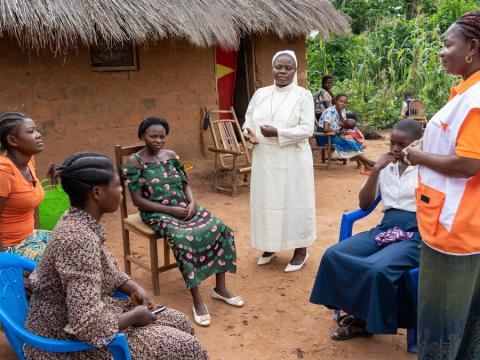Learn how to break down barriers to build a more welcoming and inclusive community

By Sharon Gorton Education, Early Childhood Development and Disability Technical Specialist at World Vision International Laos
Each year on December 3, International Day of Persons with Disabilities celebrates the achievements of people with disabilities and raises awareness of disability issues and the rights and well-being of persons with disabilities.
Globally almost 240 million, or 1 in 10 children with disabilities are disadvantaged[1] and at risk of being left behind without access to quality inclusive education. 49% of children with disabilities are more likely to have never attended school.
World Vision partners with communities across the world to ensure enhanced wellbeing for the most vulnerable children each day.
This year, the focus is Not All Disabilities are Visible but what does that mean to us? On a personal level there are many ways we can help to build more welcoming and inclusive communities.
- Understand neurodiversity, the most common invisible disability, where each person is unique and their brains are wired differently from peers. Neurodiversity occurs with variations of the human brain which influences the way a person thinks and uses their brain. Children who think in a different way include children with ADHD, Autism, Dyspraxia, Dyslexia and Tourette’s Syndrome.
- Listen to people with disabilities and their caregivers. They have the expertise in what their family needs and possible solutions but may need assistance to obtain those solutions.
- Understand lived experiences of people with disability. Read articles and books by authors with a disability from your country and across the world. Somebody Somewhere, Breaking Free from Autism by Donna Williams.
- Link caregivers to schools and communities and open the doors to opportunities for children with disabilities to interact with their peers in normal everyday activities.
- Learn the language. Use inclusive language to move towards acceptance of all and pause for a moment to put yourself in their shoes to understand the barriers and obstacles. Just as you would ask a person their name, you can also ask a person do they refer to their impairment.
- Vote with your feet by joining with people with disabilities to celebrate International Day of Persons with Disability local events.
- Change your Reactions, Take Actions. Every time we meet people with disability we have a choice about how we react. Take action - If you are unsure of how you should interact with a person with a disability, just ask them, offer to help – but respect their right to say ‘no thanks’. We can ignore or build a more inclusive community for all with each choice.
- Promote participation. Remove the barriers be it physical access with wheel chair ramps or change in attitudes from exclusion to inclusion for persons with diverse abilities.
A ripple starts with a single stone. Together, we can make a difference to build equitable and just communities for all.
[1] United Nations Children’s Fund (UNICEF), Seen, Counted, Included: Using data to shed light on the well-being of children with disabilities, UNICEF, New York, 2021.